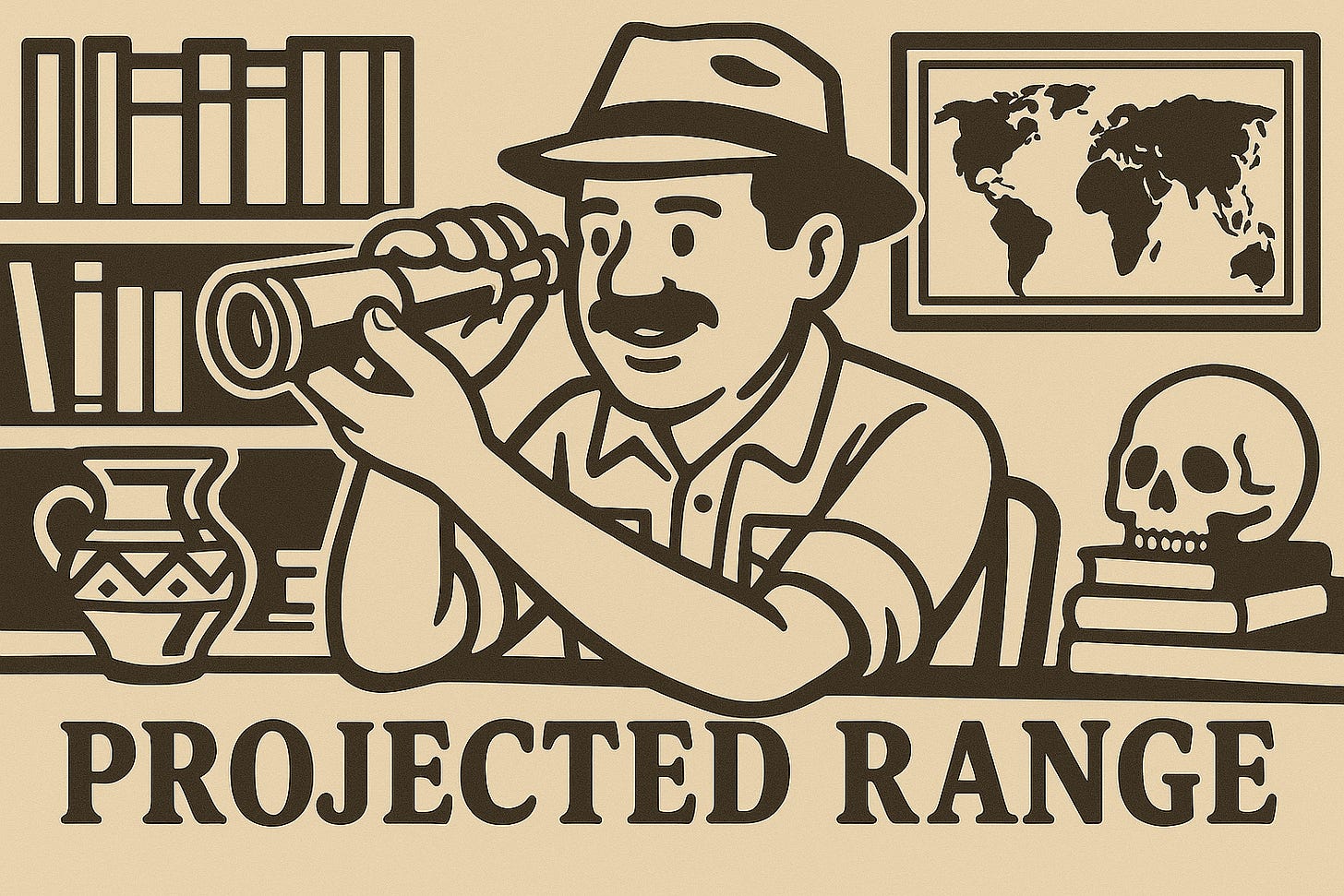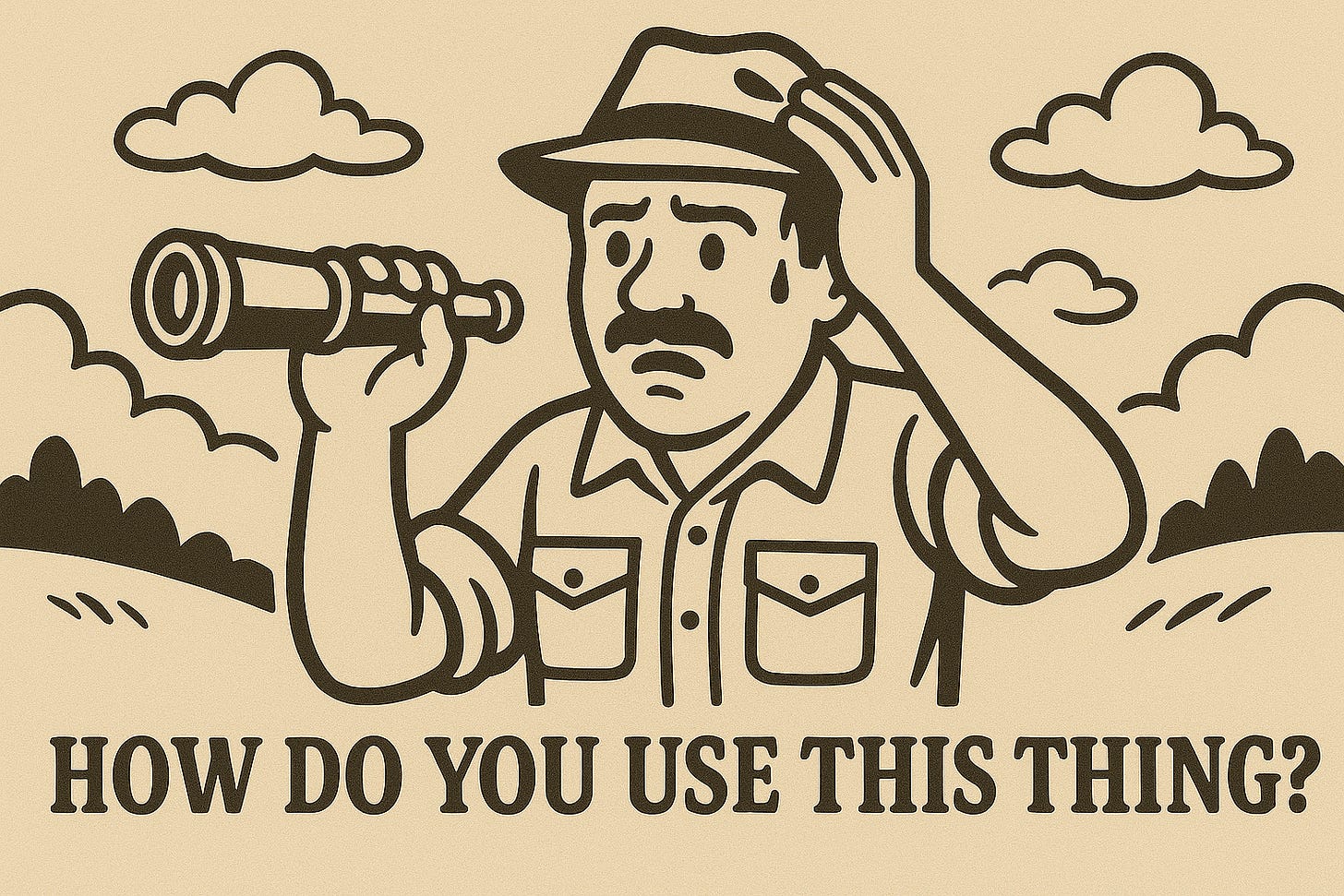When the TSA⛏️ flags a signal today, it digs through historical data for that same stock finding past instances of that same signal. It then tracks the stock's performance over the next 10 trading days (that's the standard look-ahead window).
The Projected Range shows the average highest point and the average lowest point reached during those 10-day follow-up periods, relative to the price when the signal triggered. It's displayed as percentages on the chart and in the Telegram message.
Several things feed into this calculation. No need to memorize the formulas, just grasp the concepts:
The Signal Itself: Different signals have different historical track records. A momentum reversal signal might historically lead to sharper, quicker pops (and drops) than a slower-burn buy signal. The type of signal dictates which historical instances are averaged.
The Stock's History: Every stock has its own personality. Volatile tech stocks will naturally have wider historical ranges than sleepy utility companies. The range reflects the stock's typical behavior after the specific signal.
The Number of Tests: This is critical. The range is an average. Averages based on 50 historical instances are far more meaningful than averages based on 5. The test count tells you how much data is backing the projection. Low test count? The range is statistically weak. Treat it like a vague rumor, not a reliable map. My system has built-in thresholds – if the count is below that, it's often not even worth graphing in detail because the data is too thin.
Listen carefully, this is where people get it wrong.
It's NOT a Prediction: It's a statistical average of past outcomes. The actual price can, and often will, go higher than the average high or lower than the average low. Don't treat these as absolute ceilings or floors.
Use it for Risk/Reward Context: Look at the average potential high versus the average potential low. Does the historical average upside justify the historical average downside for this specific signal on this stock?
Check the Test Count: Seriously. If it's low (say, under 10-15), the range is speculative at best. High test count (30+) lends more credibility to the average.
Gauge the Width: Is the range tight (e.g., +5% to +2%) or wide (e.g., +15% to -5%)? A tight range suggests more historical consistency after that signal. A wide range suggests outcomes varied significantly.
Combine with Other Info: Look at the market state, seasonality, earnings data (all provided in the Telegram message). Does the projected range align with these factors, or contradict them? A strong projection in a hostile market with bad seasonality is less compelling.
The Projected Range is a major input into the Confidence Score I calculate (which you also see in the Telegram message). Here's how:
Average Outcome: The midpoint between average high and low. A higher average projection generally boosts confidence. If history suggests an average gain, that's better than an average loss, obviously.
Test Count: More tests mean the projection is statistically stronger. The confidence calculation gives more weight to the projection score if the test_count is high.
Positive Floor: If the average low point in historical tests was still above the entry price (i.e., positive), that's a strong sign. It gets a direct bonus to the confidence score because it suggests resilience even on the downside in past instances.
The Projected Range is a powerful piece of context derived from historical data. It tells you the average trajectory after a specific signal. Use it to assess potential, gauge risk, and understand the statistical reliability of the setup. Don't mistake it for a guarantee. Understand its components, interpret it wisely, integrate it with other data points.
That's it. Digest it. Apply it.
Back to work.
Caesar









